Influence of the Geometric Shape of the Courtyard of Traditional Wooden Folk Houses on the Lighting Performance of Their Central Room: A Case Study of the Traditional Folk Houses of the Tujia People in Western Hunan, China
Abstract
:1. Introduction
2. Literature Review
3. Method
3.1. Study Area and Object
3.2. Research Factors
3.3. Research Methodology
3.4. Research Framework
4. Results and Discussion
4.1. Analysis of Model Validation Results
4.2. The Impact of the Geometric Dimensions of L-Shaped Residential Courtyards on Indoor Lighting
4.3. The Impact of Courtyard Geometric Dimensions on Indoor Lighting in U-Shaped and Courtyard-Style Dwellins
4.4. Effect of Courtyard Angle on the Light Performance of the Central Room
5. Conclusions
- (1)
- The Impact of Courtyard Geometry on Daylighting in L-Shaped Dwellings
- (2)
- Width (W) Influence:
- (3)
- Height (H) Impact:
- (4)
- Horizontal and Vertical Comparisons:
- (5)
- Courtyard Plan Angle:
- (6)
- Limitations and Future Work:
Author Contributions
Funding
Data Availability Statement
Conflicts of Interest
References
- Evans, M.; Yu, S.; Song, B.; Deng, Q.; Liu, J.; Delgado, A. Building energy efficiency in rural China. Energy Policy 2014, 64, 243–251. [Google Scholar] [CrossRef]
- He, B.-J.; Yang, L.; Ye, M.; Mou, B.; Zhou, Y. Overview of rural building energy efficiency in China. Energy Policy 2014, 69, 385–396. [Google Scholar] [CrossRef]
- Zhu, Y.; Lin, B. Sustainable housing and urban construction in China. Energy Build. 2004, 36, 1287–1297. [Google Scholar] [CrossRef]
- Wu, Y.; Li, H.F. Attention to Rural Green-Building Design in China. Appl. Mech. Mater. 2013, 357–360, 327–331. [Google Scholar] [CrossRef]
- Paquette, S.; Domon, G. Changing ruralities, changing landscapes: Exploring social recomposition using a multi-scale approach. J. Rural Stud. 2003, 19, 425–444. [Google Scholar] [CrossRef]
- Bilsborrow, R.E.; DeLargy, P.F. Land Use, Migration, and Natural Resource Deterioration: The Experience of Guatemala and the Sudan. Popul. Dev. Rev. 1990, 16, 125. [Google Scholar] [CrossRef]
- Song, W.; Liu, M. Assessment of decoupling between rural settlement area and rural population in China. Land Use Policy 2014, 39, 331–341. [Google Scholar] [CrossRef]
- Zhang, M.; Chen, Q.; Zhang, K. Influence of the variation in rural population on farmland preservation in the rapid urbanization area of China. J. Geogr. Sci. 2021, 31, 1365–1380. [Google Scholar] [CrossRef]
- Liu, Y.; Zang, Y.; Yang, Y. China’s rural revitalization and development: Theory, technology and management. J. Geogr. Sci. 2020, 30, 1923–1942. [Google Scholar] [CrossRef]
- Chen, X. The core of China’s rural revitalization: Exerting the functions of rural area. China Agric. Econ. Rev. 2019, 12, 1–13. [Google Scholar] [CrossRef]
- Chen, F.; Yu, M.; Zhu, F.; Shen, C.; Zhang, S.; Yang, Y. Rethinking Rural Transformation Caused by Comprehensive Land Consolidation: Insight from Program of Whole Village Restructuring in Jiangsu Province, China. Sustainability 2018, 10, 2029. [Google Scholar] [CrossRef]
- Yang, J.; Yang, R.; Chen, M.-H.; Su, C.-H.; Zhi, Y.; Xi, J. Effects of rural revitalization on rural tourism. J. Hosp. Tour. Manag. 2021, 47, 35–45. [Google Scholar] [CrossRef]
- Asabere, P.K.; Hachey, G.; Grubaugh, S. Architecture, historic zoning, and the value of homes. J. Real Estate Financ. Econ. 1989, 2, 181–195. [Google Scholar] [CrossRef]
- Albu, S.; Albu, I. Depreciation of the Economic Value of Historic Properties. Open J. Appl. Sci. 2021, 11, 1256–1267. [Google Scholar] [CrossRef]
- Zahirovic-Herbert, V.; Chatterjee, S. Historic Preservation and Residential Property Values: Evidence from Quantile Regression. Urban Stud. 2012, 49, 369–382. [Google Scholar] [CrossRef]
- Oliveira, M.L.S.; Neckel, A.; Pinto, D.; Maculan, L.S.; Zanchett, M.R.D.; Silva, L.F.O. Air pollutants and their degradation of a historic building in the largest metropolitan area in Latin America. Chemosphere 2021, 277, 130286. [Google Scholar] [CrossRef]
- Shipley, R.; Utz, S.; Parsons, M. Does Adaptive Reuse Pay? A Study of the Business of Building Renovation in Ontario, Canada. Int. J. Herit. Stud. 2006, 12, 505–520. [Google Scholar] [CrossRef]
- Powe, M.; Mabry, J.; Talen, E.; Mahmoudi, D. Jane Jacobs and the Value of Older, Smaller Buildings. J. Am. Plan. Assoc. 2016, 82, 167–180. [Google Scholar] [CrossRef]
- Silva, J.; Mendes, J.F.G.; Silva, L.T. Assessment of energy efficiency in street lighting design. WIT Trans. Ecol. Environ. 2010, 129, 705–715. [Google Scholar] [CrossRef]
- Marc, G.; Risteiu, M.; Ileana, I.; Olteanu, E. Optimal Control of Real Ambient LED Lighting Powering; Cristea, I., Vladescu, M., Tamas, R., Eds.; SPIE: Bellingham, WA, USA, 2015; p. 925814. [Google Scholar] [CrossRef]
- Hao, H.-G.; Zhang, D.-D.; Tang, S. Analysis of the LED Lamp Arrangement for Uniformity of Illumination in Indoor VLC System. J. Opt. Soc. Korea 2014, 18, 663–671. [Google Scholar] [CrossRef]
- Petrinska, I.; Georgiev, V.; Ivanov, D. Lighting control system for public premises, based on evolutionary optimization algorithm. In Proceedings of the 2018 20th International Symposium on Electrical Apparatus and Technologies (SIELA), Bourgas, Bulgaria, 3–6 June 2018; IEEE: Piscataway, NJ, USA, 2018; pp. 1–3. [Google Scholar] [CrossRef]
- Wang, X.; Linnartz, J.P. Intelligent illuminance control in a dimmable LED lighting system. Light. Res. Technol. 2017, 49, 603–617. [Google Scholar] [CrossRef]
- Li, B.; Wang, J.; Gao, Z.; Gao, N. Light Source Layout Optimization Strategy Based on Improved Artificial Bee Colony Algorithm. Math. Probl. Eng. 2021, 2021, 8099757. [Google Scholar] [CrossRef]
- Stankovic, B.; Kostic, A.; Popovic, M.J. Analysis and comparison of lighting design criteria in green building certification systems—Guidelines for application in Serbian building practice. Energy Sustain. Dev. 2014, 19, 56–65. [Google Scholar] [CrossRef]
- Lee, H.; Choi, C.-H.; Sung, M. Development of a Dimming Lighting Control System Using General Illumination and Location-Awareness Technology. Energies 2018, 11, 2999. [Google Scholar] [CrossRef]
- Taleb, H.M.; Antony, A.G. Assessing different glazing to achieve better lighting performance of office buildings in the United Arab Emirates (UAE). J. Build. Eng. 2020, 28, 101034. [Google Scholar] [CrossRef]
- Albatayneh, A.; Juaidi, A.; Abdallah, R.; Manzano-Agugliaro, F. Influence of the Advancement in the LED Lighting Technologies on the Optimum Windows-to-Wall Ratio of Jordanians Residential Buildings. Energies 2021, 14, 5446. [Google Scholar] [CrossRef]
- Chen, P.; Cai, R.; Tan, Y. Improving Energy Efficiency of Indoor Lighting System Based on Computer Vision; Springer Nature: Singapore, 2022; pp. 547–558. [Google Scholar]
- Katunský, D.; Dolníková, E.; Doroudiani, S. Integrated Lighting Efficiency Analysis in Large Industrial Buildings to Enhance Indoor Environmental Quality. Buildings 2017, 7, 47. [Google Scholar] [CrossRef]
- Chew, I.; Karunatilaka, D.; Tan, C.P.; Kalavally, V. Smart lighting: The way forward? Reviewing the past to shape the future. Energy Build. 2017, 149, 180–191. [Google Scholar] [CrossRef]
- Gassar, A.A.A.; Koo, C.; Kim, T.W.; Cha, S.H. Performance Optimization Studies on Heating, Cooling and Lighting Energy Systems of Buildings during the Design Stage: A Review. Sustainability 2021, 13, 9815. [Google Scholar] [CrossRef]
- Boyce, P.R.; Brandston, H.M.; Cuttle, C. Indoor lighting standards and their role in lighting practice. Light. Res. Technol. 2022, 54, 730–744. [Google Scholar] [CrossRef]
- Heschong, L.; Wright, R.L.; Okura, S. Daylighting Impacts on Human Performance in School. J. Illum. Eng. Soc. 2002, 31, 101–114. [Google Scholar] [CrossRef]
- Krüger, E.L.; Dorigo, A.L. Daylighting analysis in a public school in Curitiba, Brazil. Renew. Energy 2008, 33, 1695–1702. [Google Scholar] [CrossRef]
- Li, D.H.W.; Tsang, E.K.W. An analysis of daylighting performance for office buildings in Hong Kong. Build. Environ. 2008, 43, 1446–1458. [Google Scholar] [CrossRef]
- Sahar, D.; Bayan Abu, Q.; Riziq, H. Daylight Quality in Healthcare Design, Daylight Measurements Results and Discussion, Case Study: Jordan University Hospital. J. Energy Power Eng. 2017, 11, 141–149. [Google Scholar] [CrossRef]
- Lam, J.C.; Li, D.H.W. An analysis of daylighting and solar heat for cooling-dominated office buildings. Sol. Energy 1999, 65, 251–262. [Google Scholar] [CrossRef]
- Pellegrino, A.; Cammarano, S.; Lo Verso, V.R.M.; Corrado, V. Impact of daylighting on total energy use in offices of varying architectural features in Italy: Results from a parametric study. Build. Environ. 2017, 113, 151–162. [Google Scholar] [CrossRef]
- Husini, E.M.; Kandar, M.Z.; Arabi, F.; Yazit, R.N.S.R.M. The Effects of Daylight Fluctuation and Illuminance Level in Office Building; Future Academy: London, UK, 2019; pp. 846–855. [Google Scholar] [CrossRef]
- Omrani, M.; Lian, Z.; Xuan, H. Effects of the courtyard’s geometry in dig pit underground dwellings on the room’s daylighting performance. Build. Simul. 2019, 12, 653–663. [Google Scholar] [CrossRef]
- Gao, R.; Liu, J.; Shi, Z.; Zhang, G.; Yang, W. Patio Design Optimization for Huizhou Traditional Dwellings Aimed at Daylighting Performance Improvements. Buildings 2023, 13, 583. [Google Scholar] [CrossRef]
- Sui, G.; Liu, J.; Leng, J.; Yu, F. Daylighting performance assessment of traditional skywell dwellings: A case study in Fujian, China. J. Build. Eng. 2023, 68, 106028. [Google Scholar] [CrossRef]
- Nocera, F.; Lo Faro, A.; Costanzo, V.; Raciti, C. Daylight Performance of Classrooms in a Mediterranean School Heritage Building. Sustainability 2018, 10, 3705. [Google Scholar] [CrossRef]
- Mondal, A.; Ghosh, K.; Bardhan, S. An Approach to Interior Lighting Design for a Heritage Building. J. Assoc. Eng. India 2015, 85, 34. [Google Scholar] [CrossRef]
- Balocco, C.; Calzolari, R. Natural light design for an ancient building: A case study. J. Cult. Herit. 2008, 9, 172–178. [Google Scholar] [CrossRef]
- Zhen, M.; Du, Y.; Hong, F.; Bian, G. Simulation analysis of natural lighting of residential buildings in Xi’an, China. Sci. Total Environ. 2019, 690, 197–208. [Google Scholar] [CrossRef] [PubMed]
- Sorooshnia, E.; Rashidi, M.; Rahnamayiezekavat, P.; Samali, B. Optimizing Window Configuration Counterbalancing Energy Saving and Indoor Visual Comfort for Sydney Dwellings. Buildings 2022, 12, 1823. [Google Scholar] [CrossRef]
- Michael, A.; Gregoriou, S.; Kalogirou, S.A. Environmental assessment of an integrated adaptive system for the improvement of indoor visual comfort of existing buildings. Renew. Energy 2018, 115, 620–633. [Google Scholar] [CrossRef]
- Bournas, I.; Dubois, M.C.; Laike, T. Perceived daylight conditions in multi-family apartment blocks—Instrument validation and correlation with room geometry. Build. Environ. 2020, 169, 106574. [Google Scholar] [CrossRef]
- Fang, T.; Sun, L.; Xu, X.; Li, H.; Shao, Z. Exploring the impacts of spatial morphology of underground shopping mall atriums on natural lighting performance. Archit. Eng. Des. Manag. 2023. [Google Scholar] [CrossRef]
- Liu, Y.; Wang, W.; Li, Z.; Song, J.; Fang, Z.; Pang, D.; Chen, Y. Daylighting Performance and Thermal Comfort Performance Analysis of West-Facing External Shading for School Office Buildings in Cold and Severe Cold Regions of China. Sustainability 2023, 15, 14458. [Google Scholar] [CrossRef]
- Xue, Y.; Liu, W. A Study on Parametric Design Method for Optimization of Daylight in Commercial Building’s Atrium in Cold Regions. Sustainability 2022, 14, 7667. [Google Scholar] [CrossRef]
- Cabeza, L.; Almodovar, M.; Dominguez, I. Daylight and Architectural Simulation of the Egebjerg School (Denmark): Sustainable Features of a New Type of Skylight. Sustainability 2019, 11, 5878. [Google Scholar] [CrossRef]
- Deng, X.; Wang, M.; Fan, Z.; Liu, J. Dynamic daylight performance oriented design optimizations for contemporary reading room represented deep open-plan spaces. J. Build. Eng. 2022, 62, 105145. [Google Scholar] [CrossRef]
- Li, D.H.W.; Lam, J.C. Daylighting in residential districts undergoing urban renewal. Int. J. Ambient. Energy 2001, 22, 115–122. [Google Scholar] [CrossRef]
- Fu, J.; Zhou, J.; Deng, Y. Heritage values of ancient vernacular residences in traditional villages in Western Hunan, China: Spatial patterns and influencing factors. Build. Environ. 2021, 188, 107473. [Google Scholar] [CrossRef]
- GB 50033-2013; Standard for Daylighting Design of Buildings. China Architecture and Building Press: Beijing, China, 2013. (In Chinese)
- GB 55016-2021; General Code for Building Environment. China Architecture and Building Press: Beijing, China, 2021. (In Chinese)
- Eriksson, S.; Waldenström, L.; Tillberg, M.; Österbring, M.; Sasic Kalagasidis, A. Numerical Simulations and Empirical Data for the Evaluation of Daylight Factors in Existing Buildings in Sweden. Energies 2019, 12, 2200. [Google Scholar] [CrossRef]
- Petrinska, I.; Ivanov, D. Comparison of Experimental and Simulation Data for Daylighting. In Proceedings of the 2018 Seventh Balkan Conference on Lighting (BalkanLight), Varna, Bulgaria, 20–22 September 2018; IEEE: Piscataway, NJ, USA, 2018; pp. 1–4. [Google Scholar] [CrossRef]
- Bian, Y.; Ma, Y. Analysis of daylight metrics of side-lit room in Canton, south China: A comparison between daylight autonomy and daylight factor. Energy Build. 2017, 138, 347–354. [Google Scholar] [CrossRef]
- Shikder, S.H.; Price, A.D.; Mourshed, M. Evaluation of four artificial lighting simulation tools with virtual building reference. In Proceedings of the European Simulation and Modelling Conference (ESM 2009), Leicester, UK, 28–29 October 2009. [Google Scholar]
- Ghasemi, M.; Kandar, M.Z.; Noroozi, M. Investigating the effect of well geometry on the daylight performance in the adjoining spaces of vertical top-lit atrium buildings. Indoor Built Environ. 2016, 25, 934–948. [Google Scholar] [CrossRef]
- Chen, Y.; Liu, J.; Pei, J.; Cao, X.; Chen, Q.; Jiang, Y. Experimental and simulation study on the performance of daylighting in an industrial building and its energy saving potential. Energy Build. 2014, 73, 184–191. [Google Scholar] [CrossRef]
- Al junaibi, A.A.; Al Zaabi, E.J.; Nassif, R.; Mushtaha, E. Daylighting in Educational Buildings: Its Effects on Students and How to Maximize Its Performance in the Architectural Engineering Department of the University of Sharjah; Springer International Publishing: Berlin/Heidelberg, Germany, 2018; pp. 141–159. [Google Scholar]
- Haşim, A.; Jitka, M. Windows Influence on Room Daylighting in Residential Buildings. J. Civ. Eng. Archit. 2015, 9, 291–299. [Google Scholar] [CrossRef]
- Kalaimathy, K.; Shanthi Priya, R.; Rajagopal, P.; Pradeepa, C.; Senthil, R. Daylight performance analysis of a residential building in a tropical climate. Energy Nexus 2023, 11, 100226. [Google Scholar] [CrossRef]



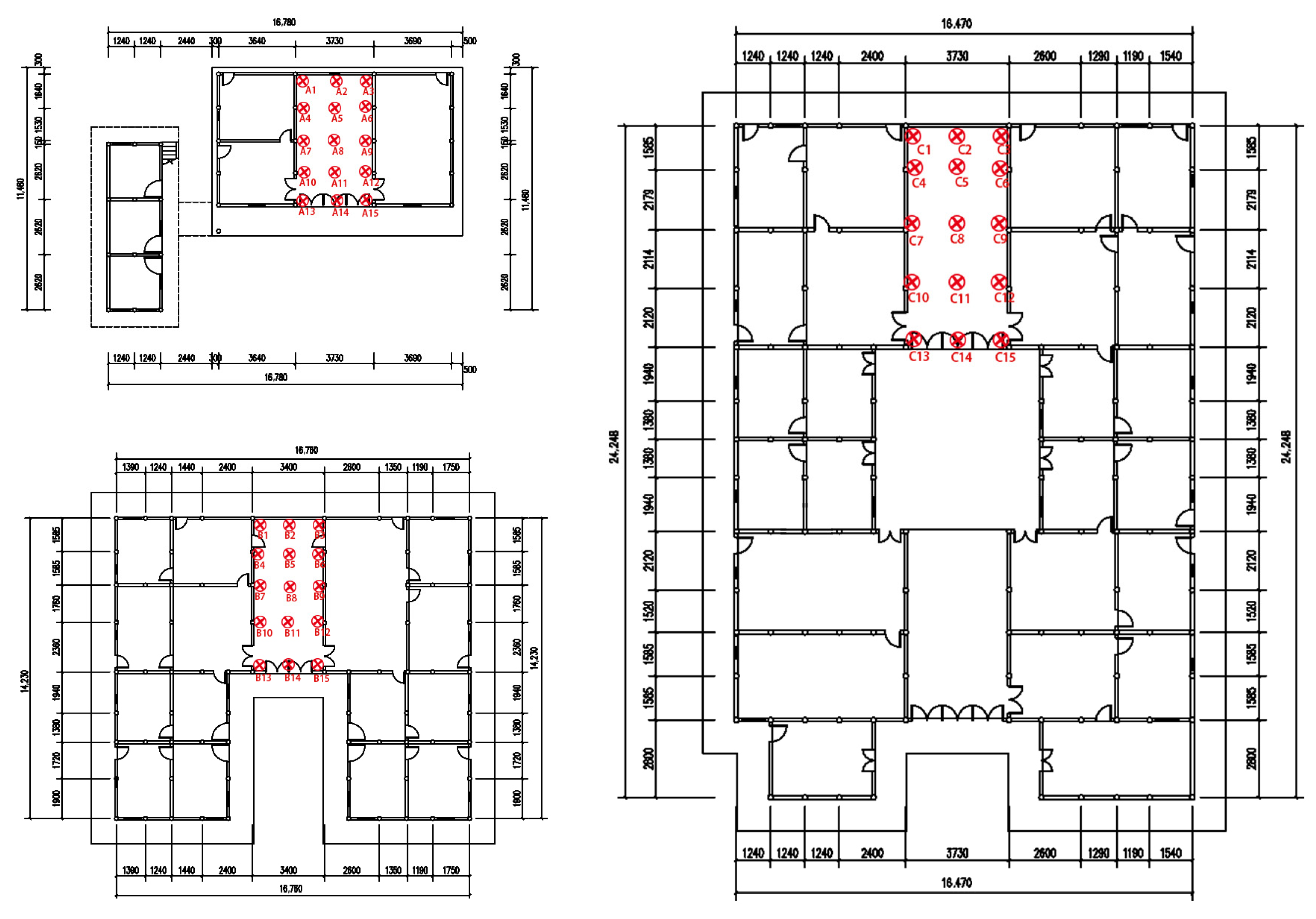
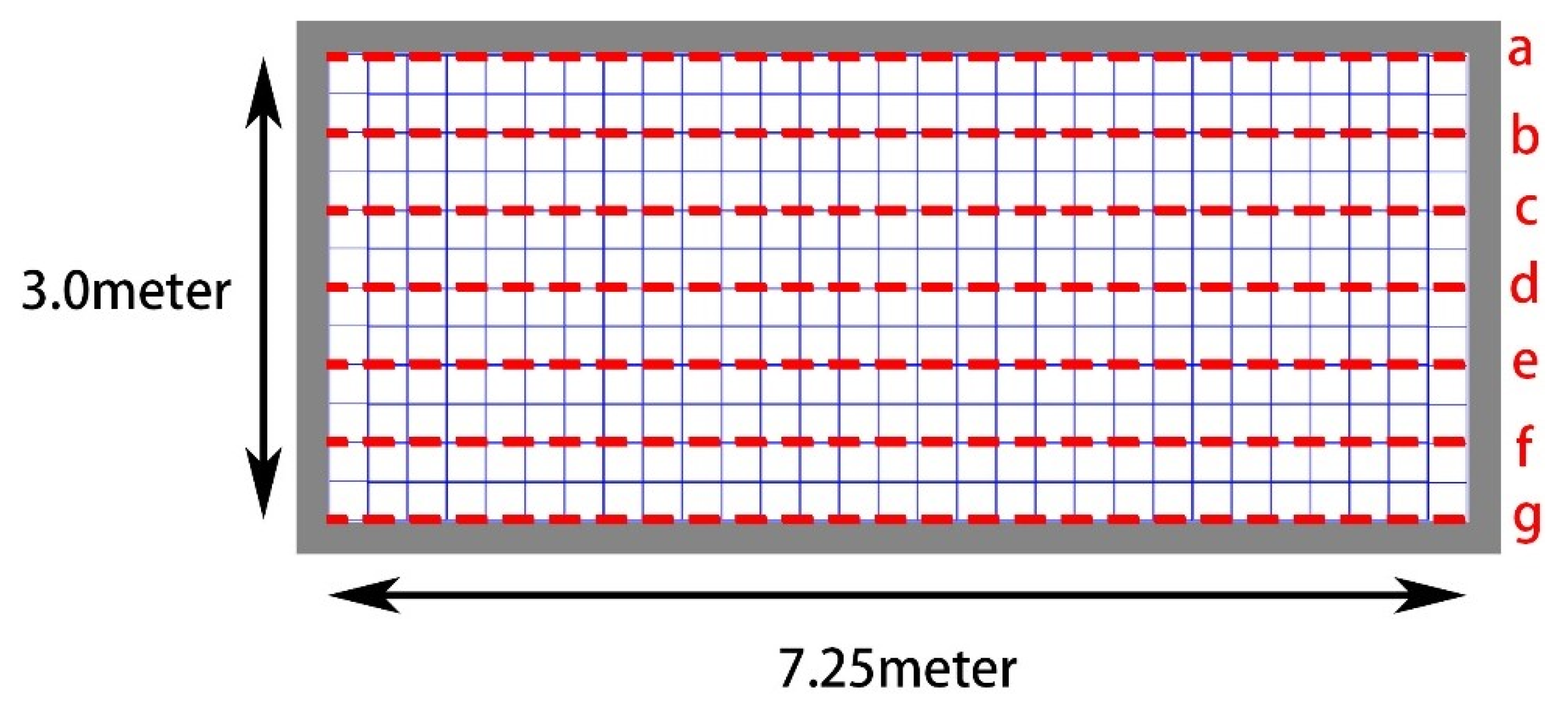

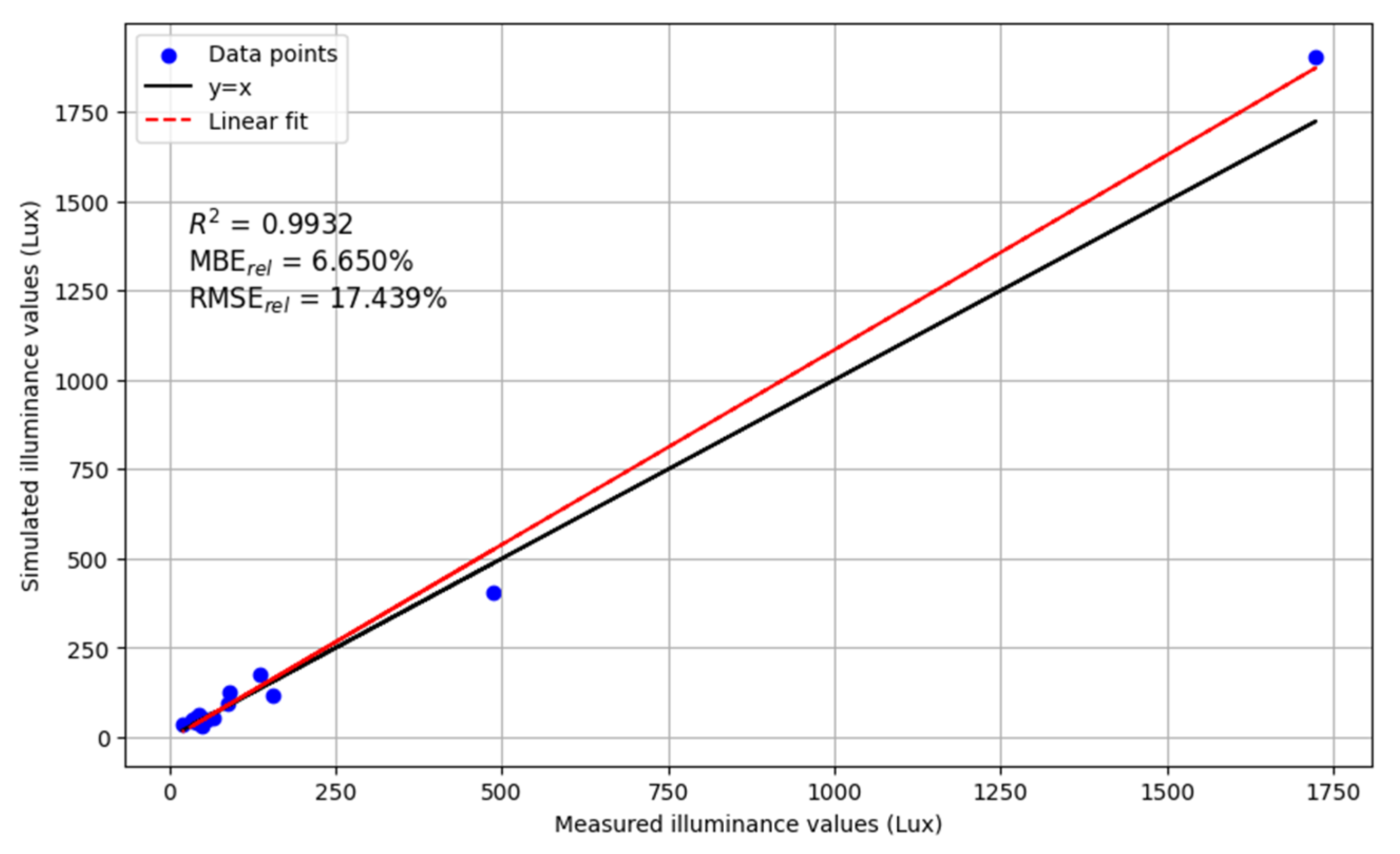
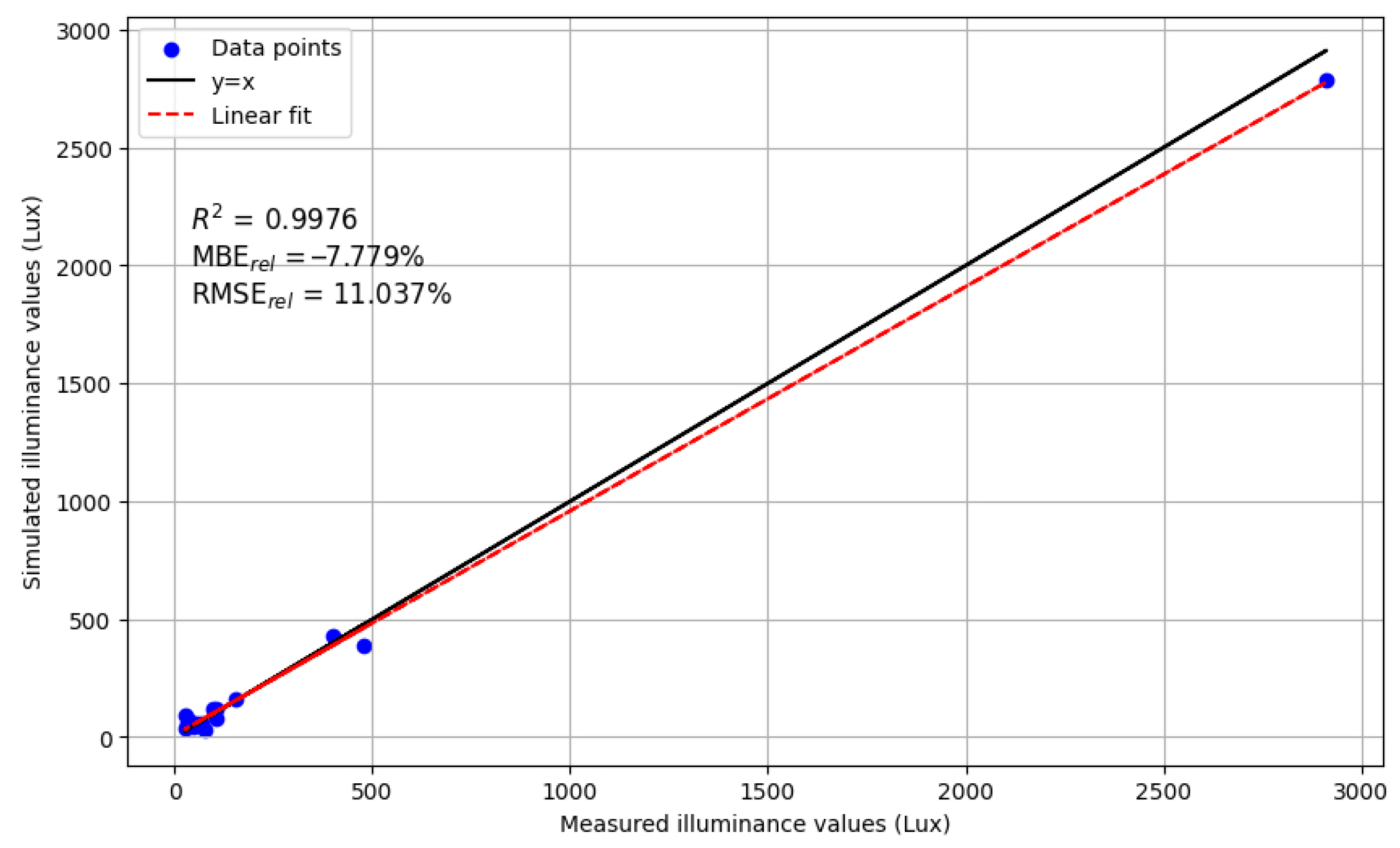
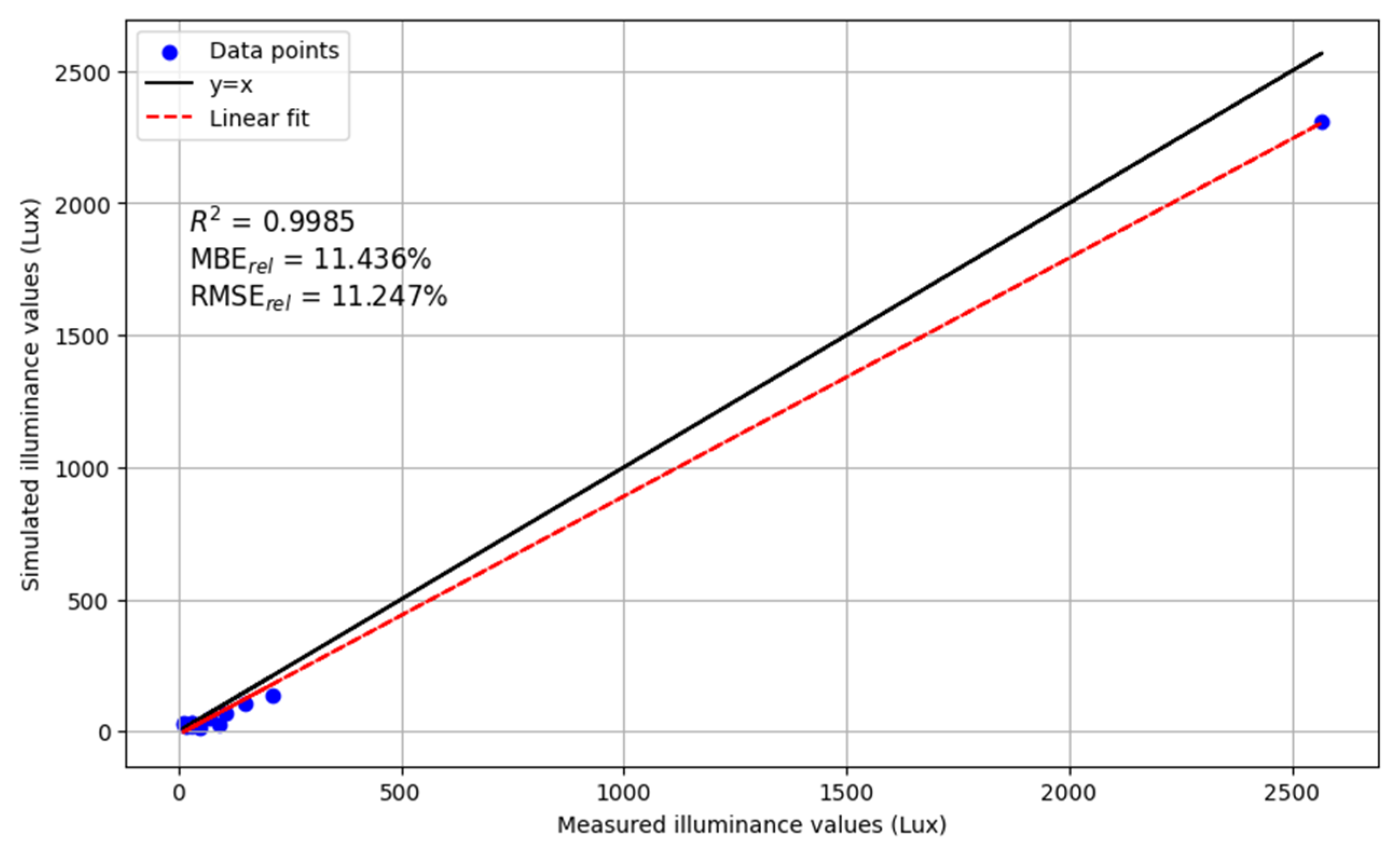
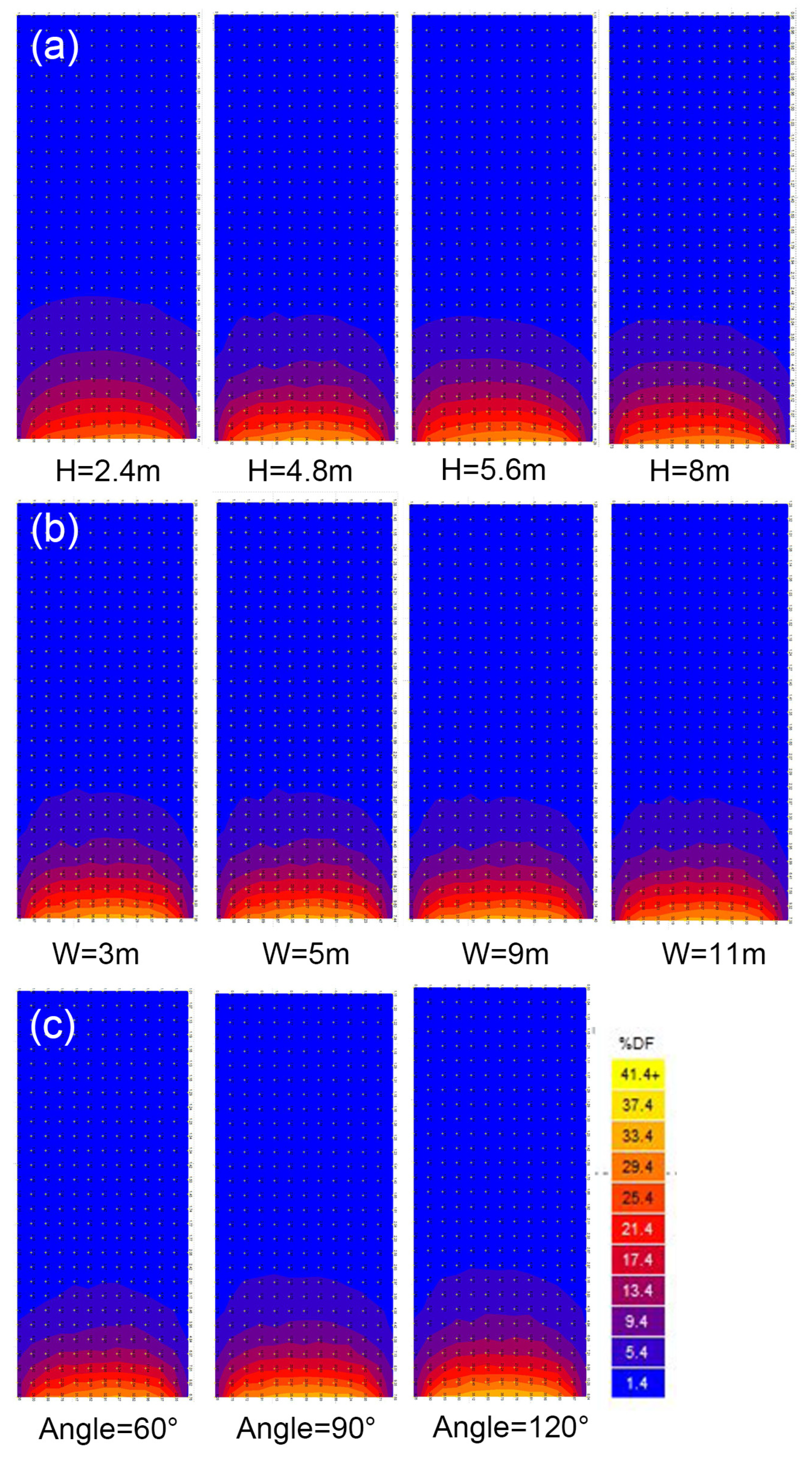



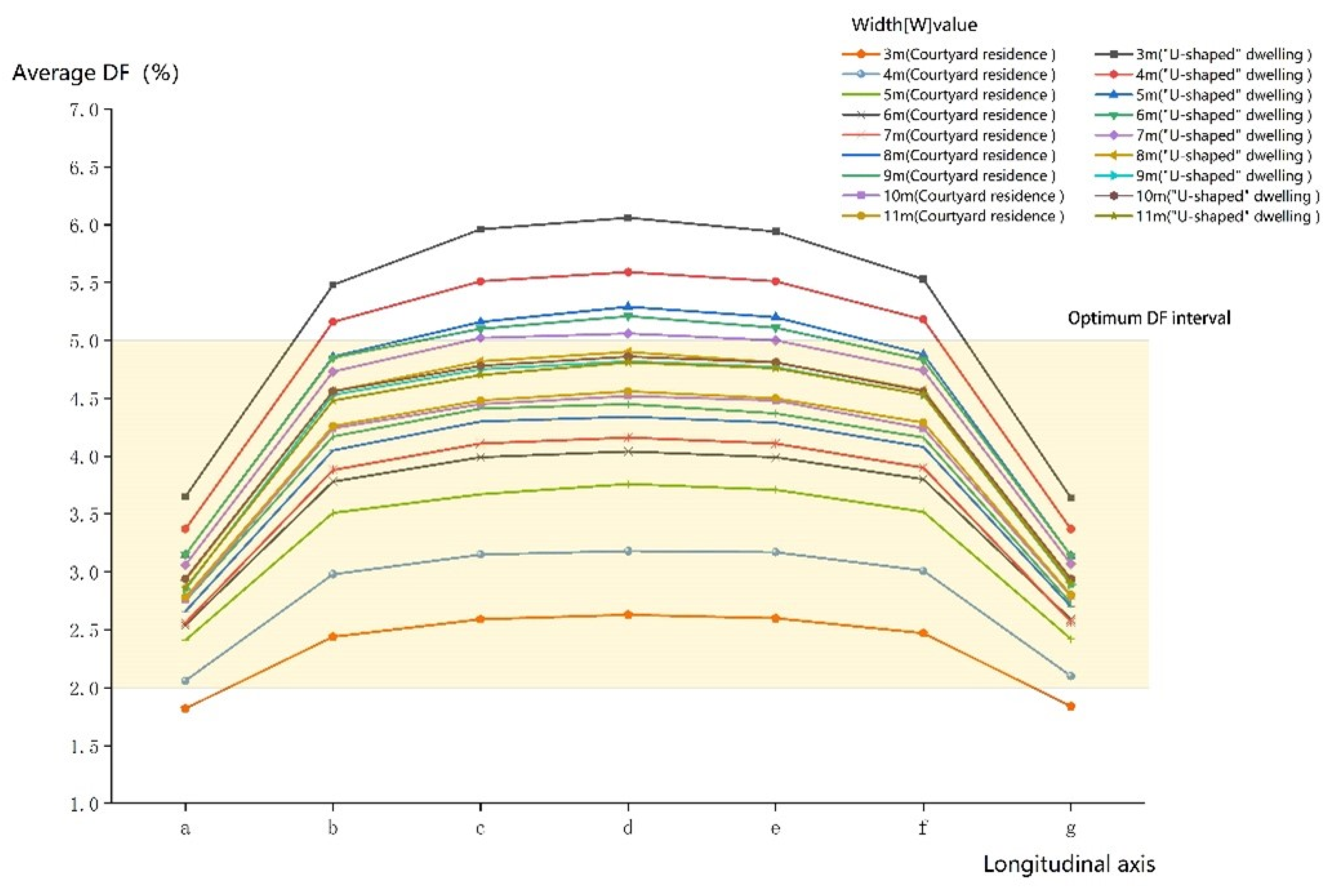
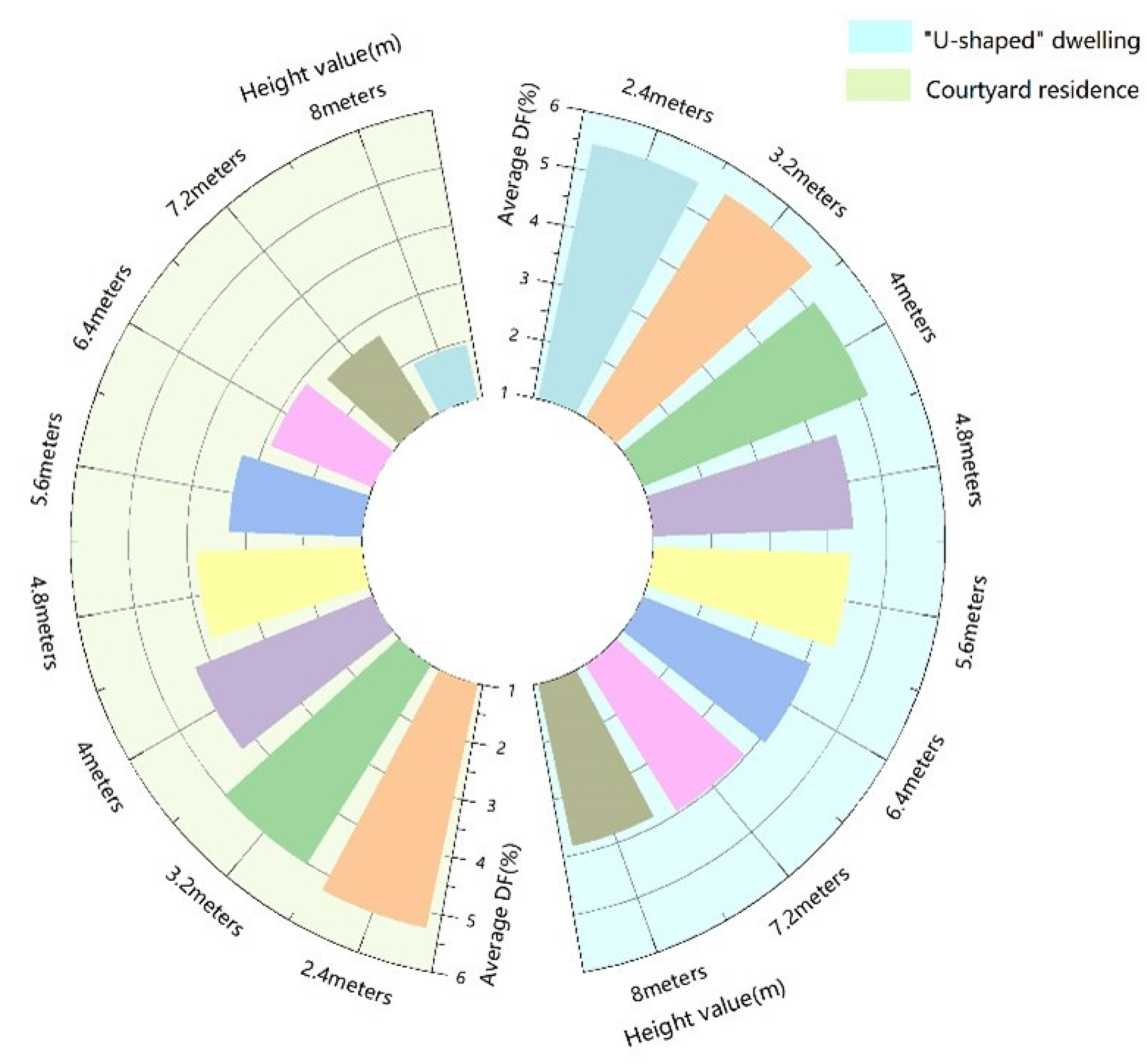

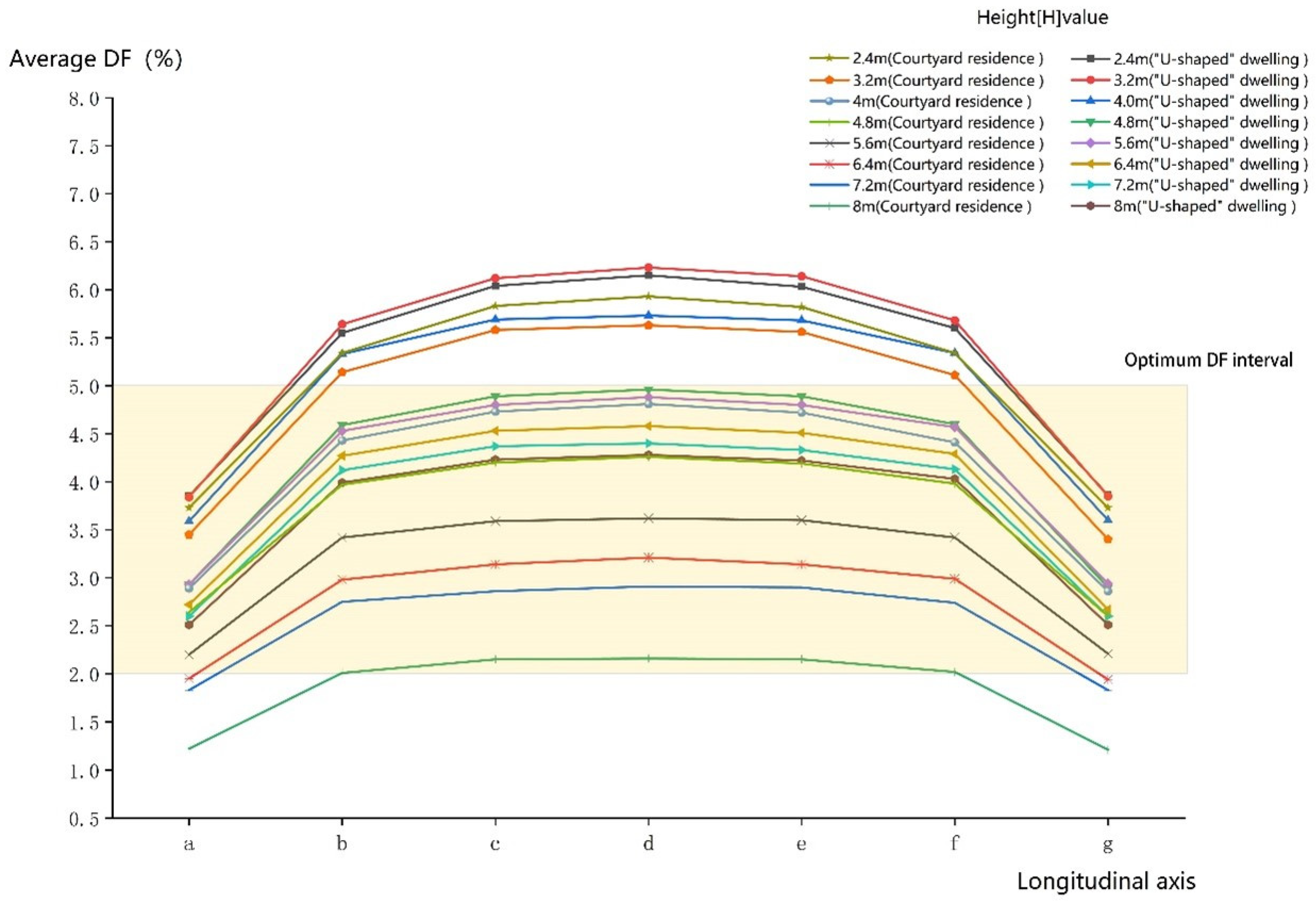
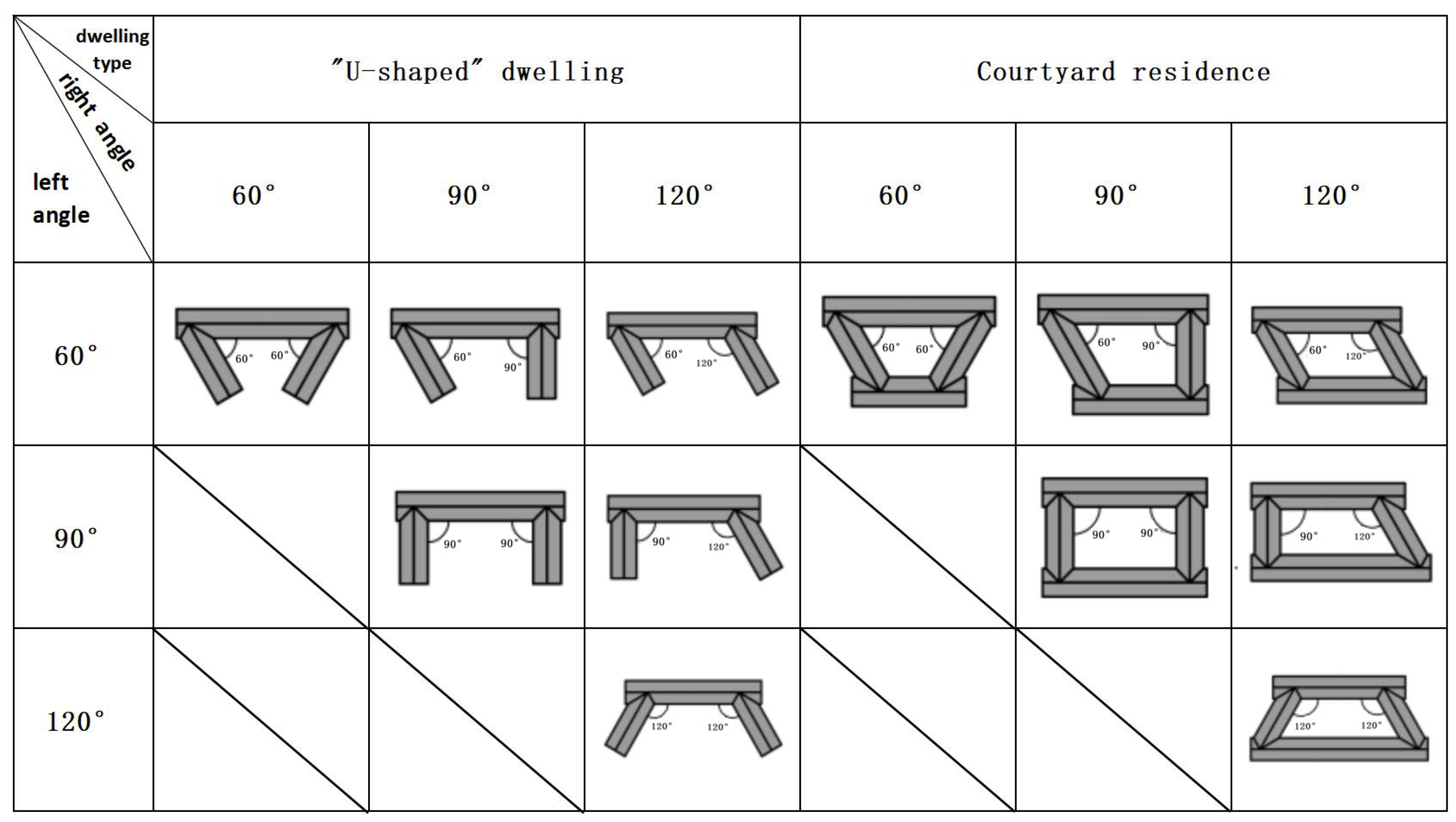

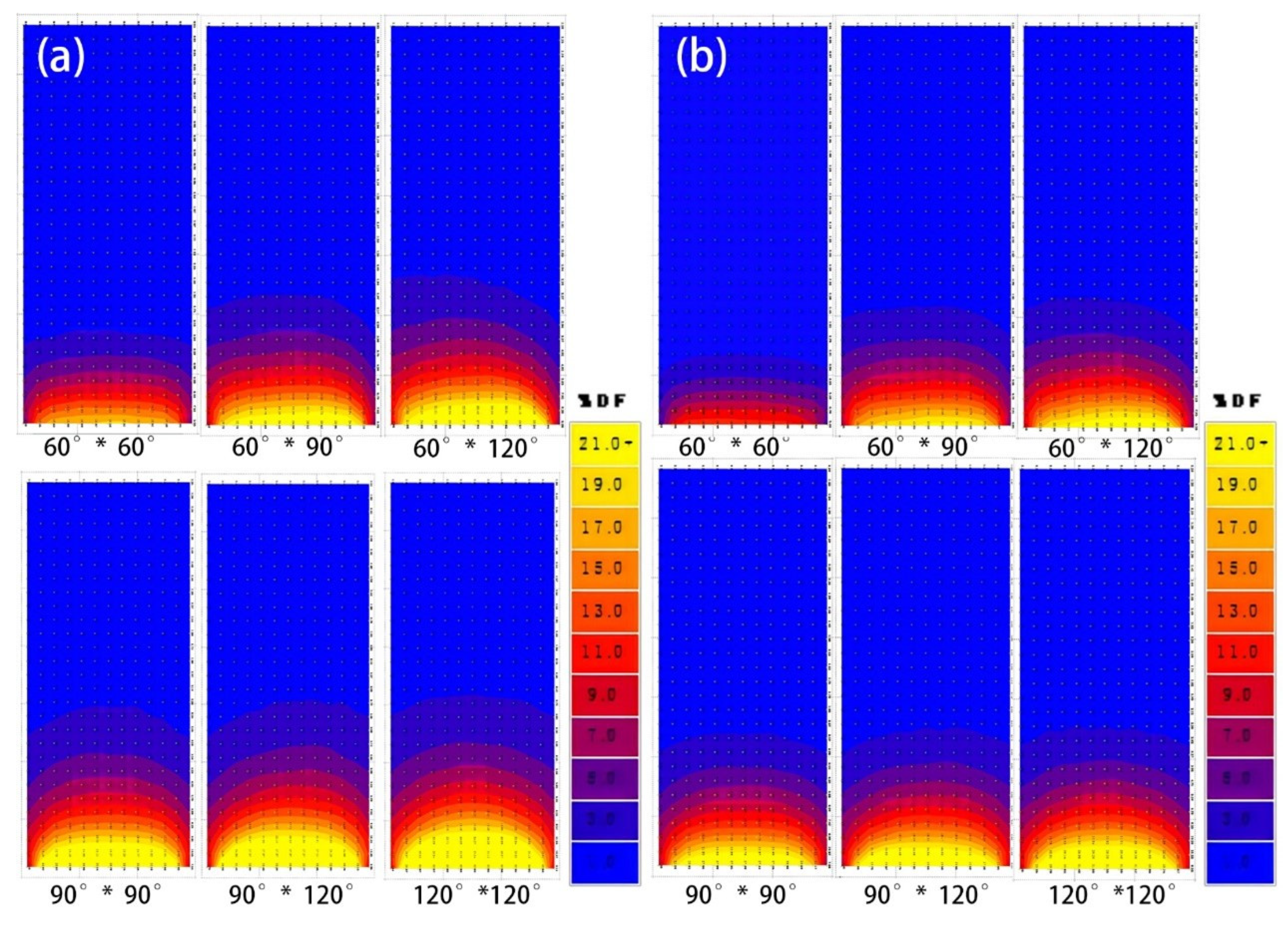

| Position | Material | Reflectance |
|---|---|---|
| Roof | Grey tile | 8% |
| Interior floor | Lime | 70% |
| Exterior floor | On ground | 30% |
| Exterior wall | China Fir | 20% |
| Interior wall | China Fir | 20% |
| Window | China Fir | 20% |
| Door | China Fir | 20% |
Disclaimer/Publisher’s Note: The statements, opinions and data contained in all publications are solely those of the individual author(s) and contributor(s) and not of MDPI and/or the editor(s). MDPI and/or the editor(s) disclaim responsibility for any injury to people or property resulting from any ideas, methods, instructions or products referred to in the content. |
© 2024 by the authors. Licensee MDPI, Basel, Switzerland. This article is an open access article distributed under the terms and conditions of the Creative Commons Attribution (CC BY) license (https://creativecommons.org/licenses/by/4.0/).
Share and Cite
Hao, Y.; Li, Z.; Wu, J.; Liu, J. Influence of the Geometric Shape of the Courtyard of Traditional Wooden Folk Houses on the Lighting Performance of Their Central Room: A Case Study of the Traditional Folk Houses of the Tujia People in Western Hunan, China. Buildings 2024, 14, 2390. https://doi.org/10.3390/buildings14082390
Hao Y, Li Z, Wu J, Liu J. Influence of the Geometric Shape of the Courtyard of Traditional Wooden Folk Houses on the Lighting Performance of Their Central Room: A Case Study of the Traditional Folk Houses of the Tujia People in Western Hunan, China. Buildings. 2024; 14(8):2390. https://doi.org/10.3390/buildings14082390
Chicago/Turabian StyleHao, Yongchun, Zhe Li, Jiade Wu, and Jixin Liu. 2024. "Influence of the Geometric Shape of the Courtyard of Traditional Wooden Folk Houses on the Lighting Performance of Their Central Room: A Case Study of the Traditional Folk Houses of the Tujia People in Western Hunan, China" Buildings 14, no. 8: 2390. https://doi.org/10.3390/buildings14082390
APA StyleHao, Y., Li, Z., Wu, J., & Liu, J. (2024). Influence of the Geometric Shape of the Courtyard of Traditional Wooden Folk Houses on the Lighting Performance of Their Central Room: A Case Study of the Traditional Folk Houses of the Tujia People in Western Hunan, China. Buildings, 14(8), 2390. https://doi.org/10.3390/buildings14082390






